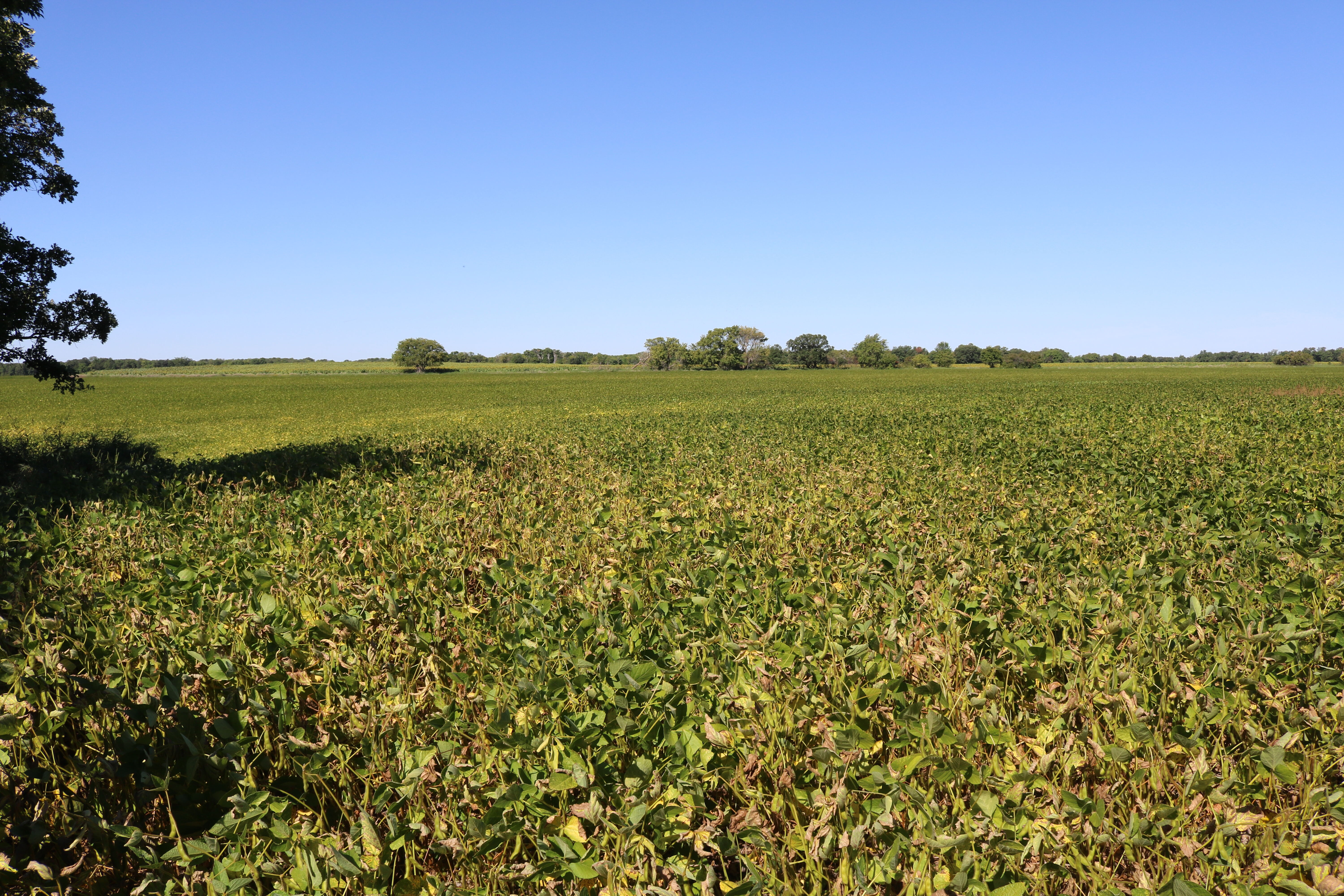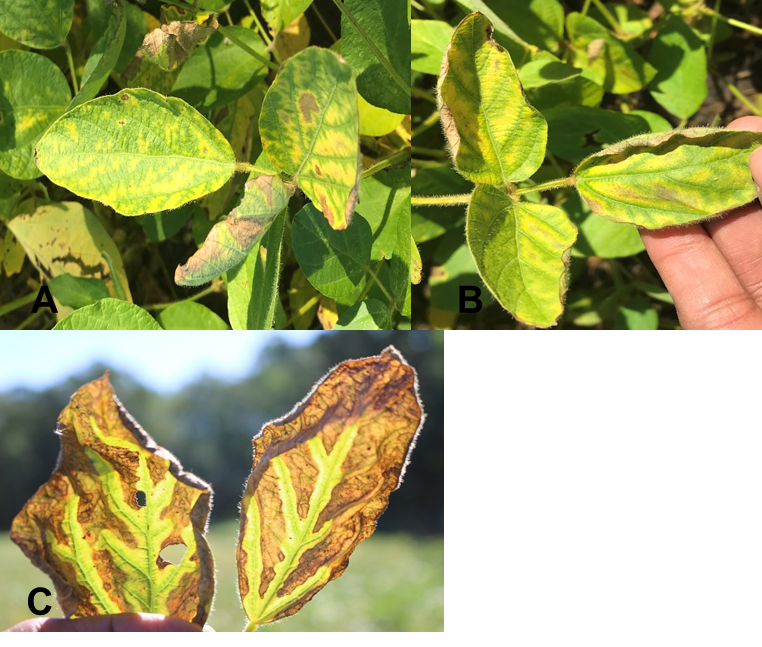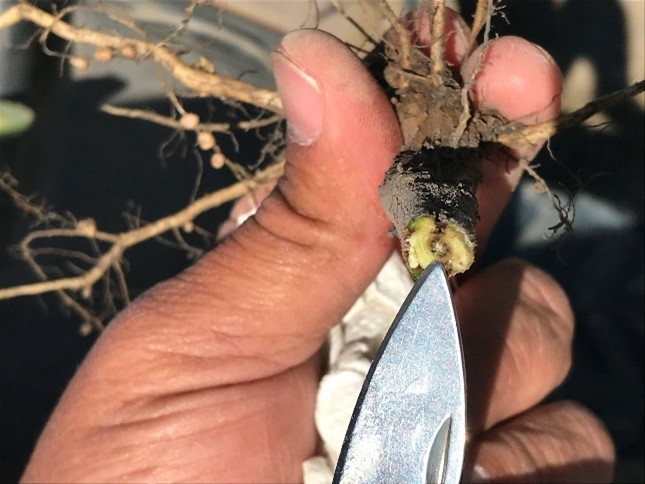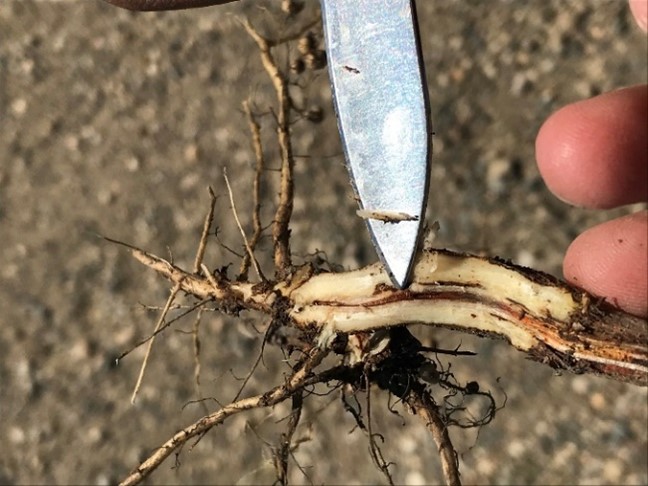Sudden Death Syndrome (SDS) is one of the leading soybean diseases that is known to cause yield-losses in North America. The disease is caused by the soil borne fungus Fusarium virguliforme. SDS was identified in Richland County ND a few years ago. However, the first report of SDS was confirmed in Cavalier County in 2020. Severe SDS can result in yield losses greater than 50 percent.
Symptoms:
Foliar
SDS fungus primarily attacks the roots and releases fungal toxins into the plant system that later reach the above ground parts of the plant. Symptoms on leaves usually appear during late vegetative to flowering and pod development stages of the crop. Leaf symptoms first appear as pale green to yellow spots in between the veins. As the disease progresses, the area between veins turn bright yellow (Fig. 2A&B) and eventually dead/brown with green veins (Fig. 2C). The leaves will detach from the petiole and fall leaving the petioles attached to the stem. In severe infestation, flowers and pods may abort or not fill.
Root
SDS causes root discoloration along with root and crown rot. Diseased plants pull out of the ground easily because of decayed roots. Also, when split lengthwise, the internal tissue will be gray to reddish brown. A blue mold may appear on the outer surface of the roots in advanced stages and during wet conditions.
Figure 1: Soybean field infested with SDS in Cavalier County.
Photo: A. Chirumamilla, NDSU
Figure 2: SDS foliar symptoms: 2A. Pale green to yellow spots in between veins; 2B. Bright yellow spots and green veins; 2C. Dead/brown spots with green veins.
Photos: A. Chirumamilla, NDSU
Figure 3: Dr. Chapara checking for SDS symptoms on soybean roots.
Photo: A. Chirumamilla, NDSU
Similarities with Brown Stem Rot
The foliar symptoms of SDS can be confused with Brown Stem Rot (BSR) as they are very similar. The best way to differentiate is to split the stem of an infected plant and check the color of the pith. The pith stays white in SDS, whereas, it turns brown in a case of BSR.
Figure 4. Brown pith of the stem indicating brown stem rot in soybeans.
Photos: A. Chirumamilla, NDSU
Association with Soybean Cyst Nematode:
There is a high degree of association between the presence of Soybean Cyst Nematode (SCN) in a field and SDS development. If the field is confirmed with SDS it is always beneficial to test for the presence of SCN.
Management:
- The most important tactic is to plant SDS resistant soybean varieties.
- Considering the association of SDS with SCN, varieties should also be resistant to SCN.
- Practice crop rotation with non-host crops such as wheat and canola.
- Plant into warm soils and reduce excessive soil moisture with drainage.
(Source: Sudden death syndrome on soybeans-University of Minnesota Extension; and Soybean Diseases- Soybean research and information network)





